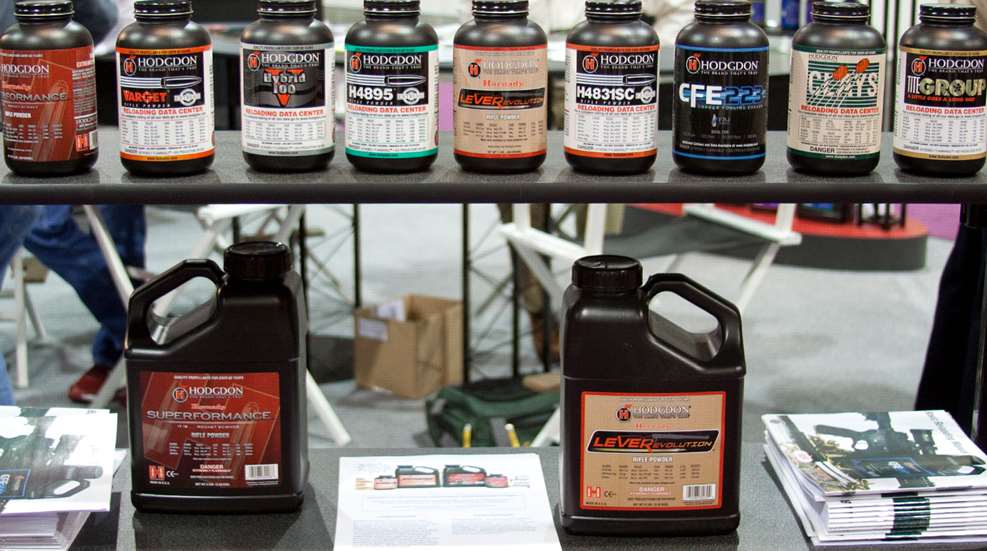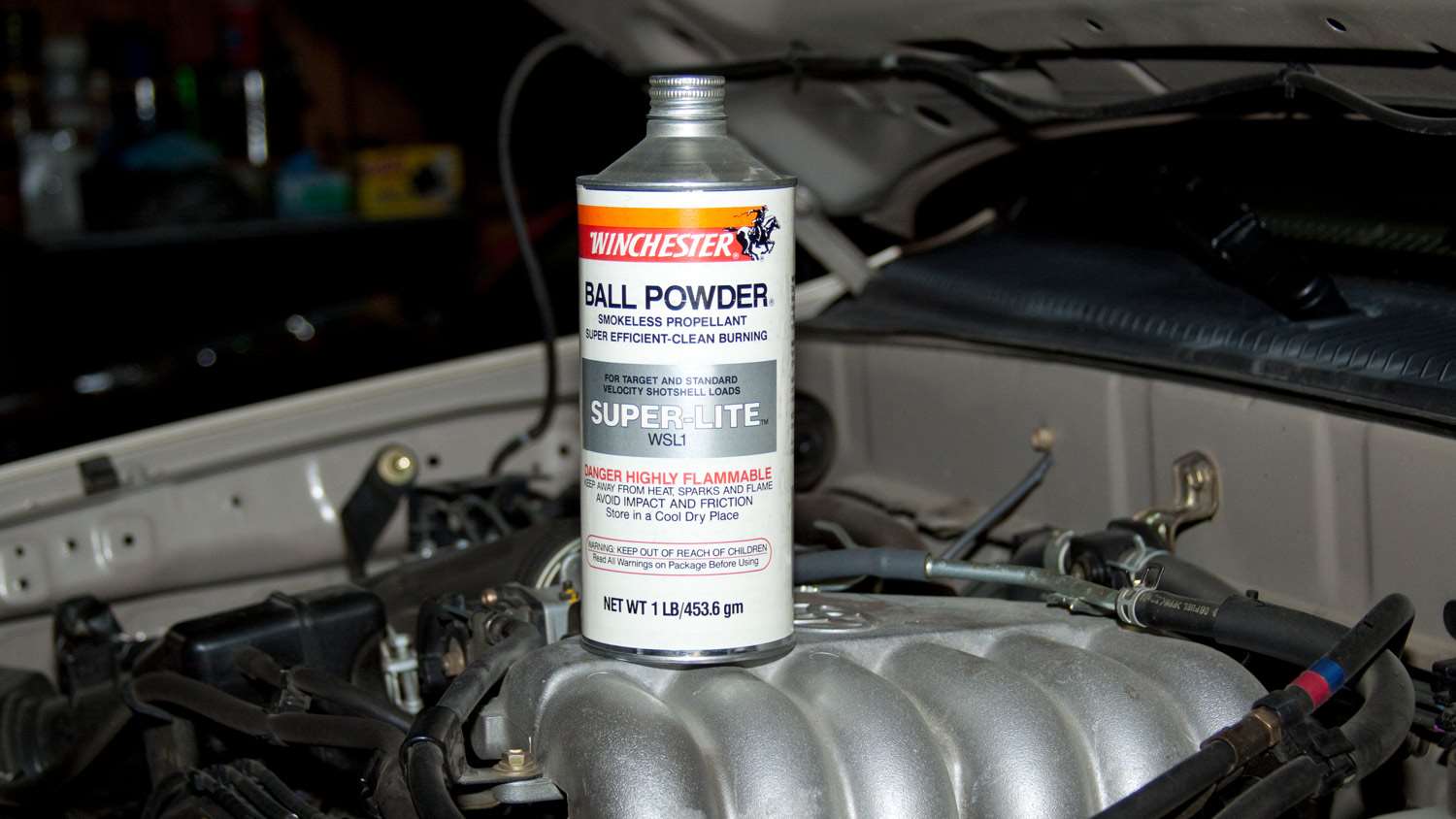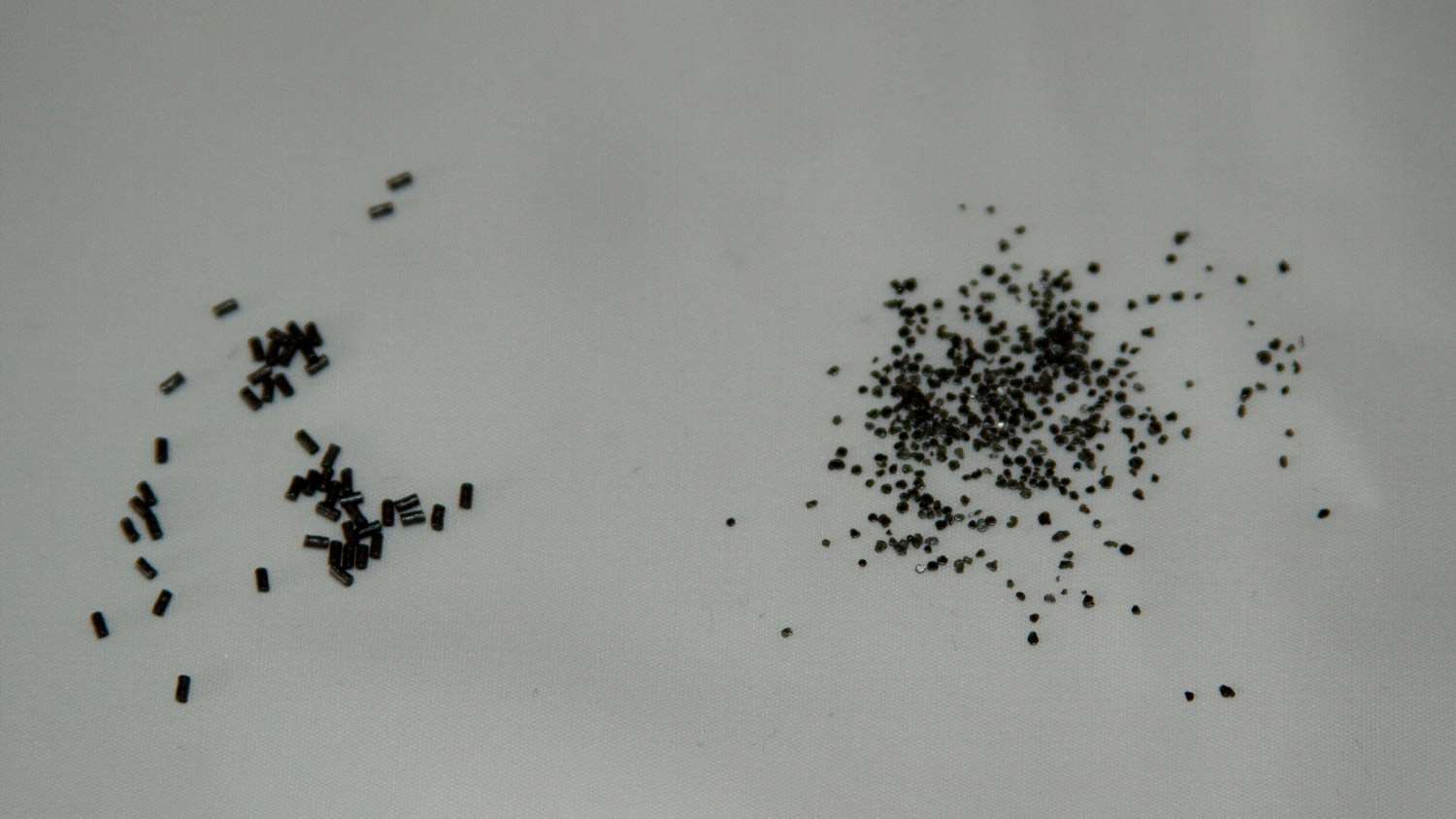
From the vault: Dr. Jason Baird’s treatise on smokeless powder for handloaders. As published in the August 2012 issue of Shooting Sports USA.
If you are a shooter who enjoys tweaking cartridges tuned to suit your competitive needs, then this article is for you. As one of three major components of modern ammunition, gunpowder gives you the most options to tune the ammunition you shoot. We are fortunate that smokeless powder is relatively safe to handle, use and store. It is also forgiving of our loading abuses (whether intentional or in error). It wasn’t always that way. Modern smokeless propellant benefits from over a hundred years of continual development and improvement.

Propellant vs. Black Powder
What we call “smokeless” powder (it’s not really a powder) is technically a propellant, the sort that is a flammable solid in granular form. It is quite different from its predecessor, the explosive we call “black” powder. Because the differences are germane to this article, let’s begin with an explanation of propellant and black powder.
Explosives: When chemical explosives detonate, they produce heat, light and a pressure wave. The pressure wave from a low explosive, like black powder, moves slower than the speed of sound. When we confine black powder within something like a gun chamber or a firecracker and ignite it, the pressure increases. In the form of blasting powder, for example, this pressure will shatter hard rock.
Propellants: Explosives can also be used as propellants. The difference is that propellants are not originally designed to explode, but rather to produce high-pressure gases that do work, like push a bullet down a barrel.
There are several ways to categorize smokeless powder. We’ve just looked at one of those categorizations—performance (propellant versus explosive). Smokeless powders are also described by their composition, grain shape and size, how they’re sold and used.
Powder Composition. The typical way we describe smokeless powder in the United States is by referring to how many major compounds it contains—one, two or three. Single-base powder has one primary energetic constituent—nitrocellulose. Double-base powder includes either nitroglycerine or nitrodiglycol that dissolves the nitrocellulose. Triple-base powder has an additional energetic constituent, usually nitroguanidine.
Single-base powders tend to produce lower heat during explosion, which typically makes them less erosive to barrel steel than nitroglycerine double-base powders. Double-base powders are more energetic and typically quicker and safer to manufacture than single-base powders. Triple-base powder’s nitroguanidine produces less muzzle flash, making the military its primary consumer.
Grain Shape and Size. Okay, so what is special about the shape and size of propellant grains? There is a direct relationship between the surface area of a grain and how much gas the powder produces as the grain burns. There is also a direct relationship between the volume of gas produced in confinement (for example, a cartridge case) to the pressure in the confined space. And the higher the pressure, the higher the burn rate will be for most propellants. Lastly, for a given weight of granular propellant, smaller grains will result in more total surface area. Powder manufacturers take each of these facts into account when they decide the grain shape and size for whatever propellant they are designing. For example, many slower burn-rate powders are constructed with larger grains made as hollow tubes or rods.

Powder Sales. To ensure consistency for handloading tables, powder companies work hard to make new lots of smokeless powder that perform almost identically to the old lot. To accomplish this, the manufacturer makes each lot of powder using the same processes and ingredients. We call this type of powder canister powder because it is sold in small (typically up to eight pound) containers. A handloader can usually depend on good lot-to-lot consistency with canister powders.
On the other hand, powder companies sell bulk powders to ammo manufacturers who blend such powders for the propellant volume, mass and burn rates they want. That’s one of the reasons why we handloaders have to purchase different canister powders to find the desired performance levels in our ammunition, while ammunition manufacturers mix (and test) powders to create the performance they want. At times, handloaders can purchase surplus bulk powders or powder resulting from the disassembly of cartridges (the so-called “pull down” powders). Be aware that such powder is not canister powder and it will not have the same lot-to-lot consistency as canister powder. If using bulk powder, treat a new lot as a brand-new powder when you load with it: i.e., reduce the per-cartridge amount you were using with the old powder lot by 10 percent and work your way gradually back to the performance level you had with the old powder lot.
Powder Usage. The most obvious grouping of smokeless powder is how we use it–shotgun, pistol or rifle powder. Traditionally, we separate these groups by burn rate, with shotgun and pistol powders having higher burn rates than slower burning rifle powders, but there is some overlap.
Powder Safety
As we’ve already noted, smokeless powder is an energetic material that can produce very high pressures under the right conditions. Powder also burns at a relatively high temperature. Be sure that you only use smokeless powder for its design application as an ammunition propellant. Any other uses are specialist applications that should be left to those with the proper training and facilities for those applications.
... don’t assume that identical weights of different powders with similar burn rates will produce the same performance in a cartridge.
This leads us to a basic fact about the safe use and storage of smokeless powder. Since powder is an energetic material, it makes sense to store the minimum amount of powder that you need in one location. Because powder can produce very high pressures, store it in such a manner that if it inadvertently ignites, the gas pressure will vent before it gets to the level where the storage system bursts and creates hazardous shrapnel. Store powder in relatively small quantities in storage systems designed not to ignite. Keep the powder in its original container and store any more than small amounts (a few pounds) in storage units with NFPA or UL fire ratings that match your storage situation.
Powder Life
Imagine that you open your storage locker, grab that eight-pound jug of surplus IMR 5010 you were using to load your magnum rifle rounds last year, unscrew the powder jug top, and—whew! What’s that smell? Instead of that nice, clean, solvent odor, you detect a bit of ammonia or something else unusual wafting from the jug. It’s time to dispose of that powder. Sure, there’s probably $30 worth of powder left in the jug, but what sort of powder? Is it worth risking your $1,500 rifle or a trip to the emergency room to have your face repaired?
Why does powder go bad? Powder companies use mixed acids (sulfuric and nitric) in the manufacture of most smokeless powders. Any acid that remains in the powder after it is finished will cause the powder to decompose. To counter this, the companies add stabilizers that neutralize the remaining acids. Unfortunately, when we subject powders to moisture and elevated temperatures, the powders begin to decompose, creating additional byproducts. Only a finite amount of stabilizer is in the powder. When the stabilizer is used-up through neutralizing manufacturing acid residues and decomposition byproducts, any acids generated by further decomposition will accelerate the decomposition in a “death spiral” for that container of powder.
Anytime you have smokeless powder that smells or looks dodgy, get rid of it through the proper means. Don’t dump it into the toilet or down the drain, or simply toss it in the trash can. Open-air burning can be dangerous unless you have the right facilities. Powder burns hot, can start fires in surrounding materials and nearly all of it emits a cloud of unsafe gas. In most cases, you can dispose of powder legally and safely by scattering it across the grass in your yard. Contact your local waste management authority with any questions about safe and legal disposal.
Handloading Data Sources
There are many reputable sources for handloading data regarding which smokeless powders to use for a particular cartridge. Reloading handbooks and certain online resources are a good starting point for data. There is a wealth of great information in the manuals, and if you purchase more than one, you’ll notice common details regarding safety, etc., as well as tidbits that you won’t find elsewhere.
Pay particular attention to the primers listed for a given handload. There may be a big difference in whether you use a standard or a magnum primer as these contribute to the overall burn rate.
Generally, use the powder that gives the highest velocity at the lowest pressure. Okay, how do you know the pressure produced by the powder charge in that round? One good starting point is Richard Lee’s Modern Reloading handbook [reviewed here]. Lee charts the pressures expected from incremental changes in powder loads for most modern cartridges and for many different powders. Try to use data of the same period as the powder lot date you have on hand, because gradual lot-to-lot changes in smokeless powders may render older reloading data inaccurate.
Generally, use the powder that gives the highest velocity at the lowest pressure.
On a related matter, many of you know that you can find powder burn rate charts on Internet web sites and in some reloading manuals. These charts record smokeless powders from several companies, listed in order of burn rate. Apparently, some handloaders think it is okay to use these comparative rankings in place of reloading tables from reputable handloading sources. In other words, if you have a reloading table for H4895 powder, and you note on a burn rate chart that H335 has nearly the same burn rate, you might assume that it is safe to use the same number of grains of H335 as the number of grains of H4895 listed in the reloading table. This assumption is often wrong, and it can be dangerous. The danger lies in the fact that X grains of H335 do not occupy the same volume as X grains of H4895. Maintaining a correct proportion of powder-filled space to non-powder-filled space within a loaded cartridge is critical to how the powder performs when ignited.
Powder weight and volume are only two of several factors affecting the internal ballistics of a cartridge. The correct use of burn rate charts is to find propellants with similar burn rates. Therefore, if H4895 is a favorite of yours for loading a particular cartridge, but you run out of that powder or want to try a similar powder, you can look to see what other powders have burn rates similar to H4895. Once you make a choice of an alternative powder with a burn rate close to H4895’s, find the appropriate reloading table that includes that powder for the cartridge you wish to load. At that point, you may use the data from the reloading table to make safe ammunition. To reiterate: For safety’s sake, don’t assume that identical weights of different powders with similar burn rates will produce the same performance in a cartridge.
Propellant Profiles
If you are the sort that likes to tweak propellant loads and who might be interested in a comprehensive powder reference that has been around (and updated) for more than 45 years, take a look at the book Propellant Profiles. Wolfe Publishing periodically adds to this volume using information from their “Propellant Profiles” feature in Handloader magazine. The latest edition of the book was published in 2009. Because the editors included different articles written by different authors on the same powders, it is very informative and comprehensive. For example, there are seven articles on the 4831 propellant series: Four on the Hodgdon and three on the IMR variations, written by six different authors.
See more: Hodgdon Announces Release of Winchester StaBALL 6.5



































